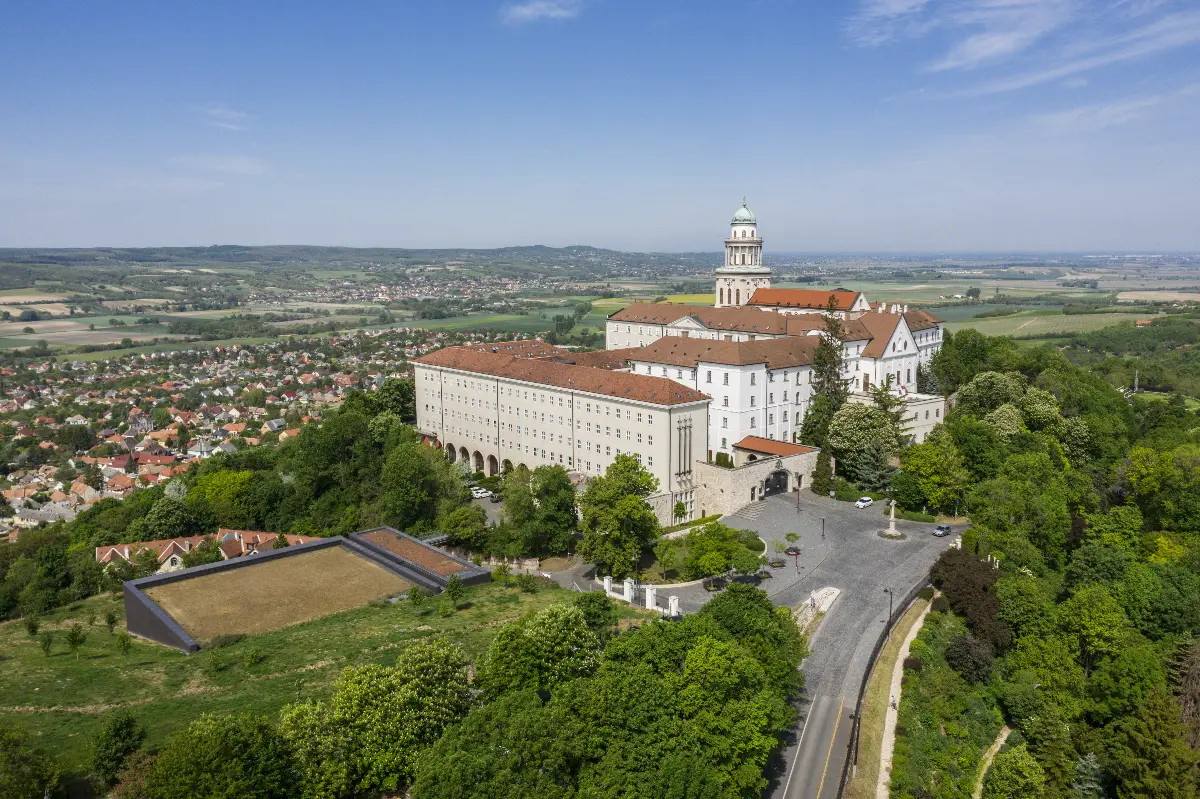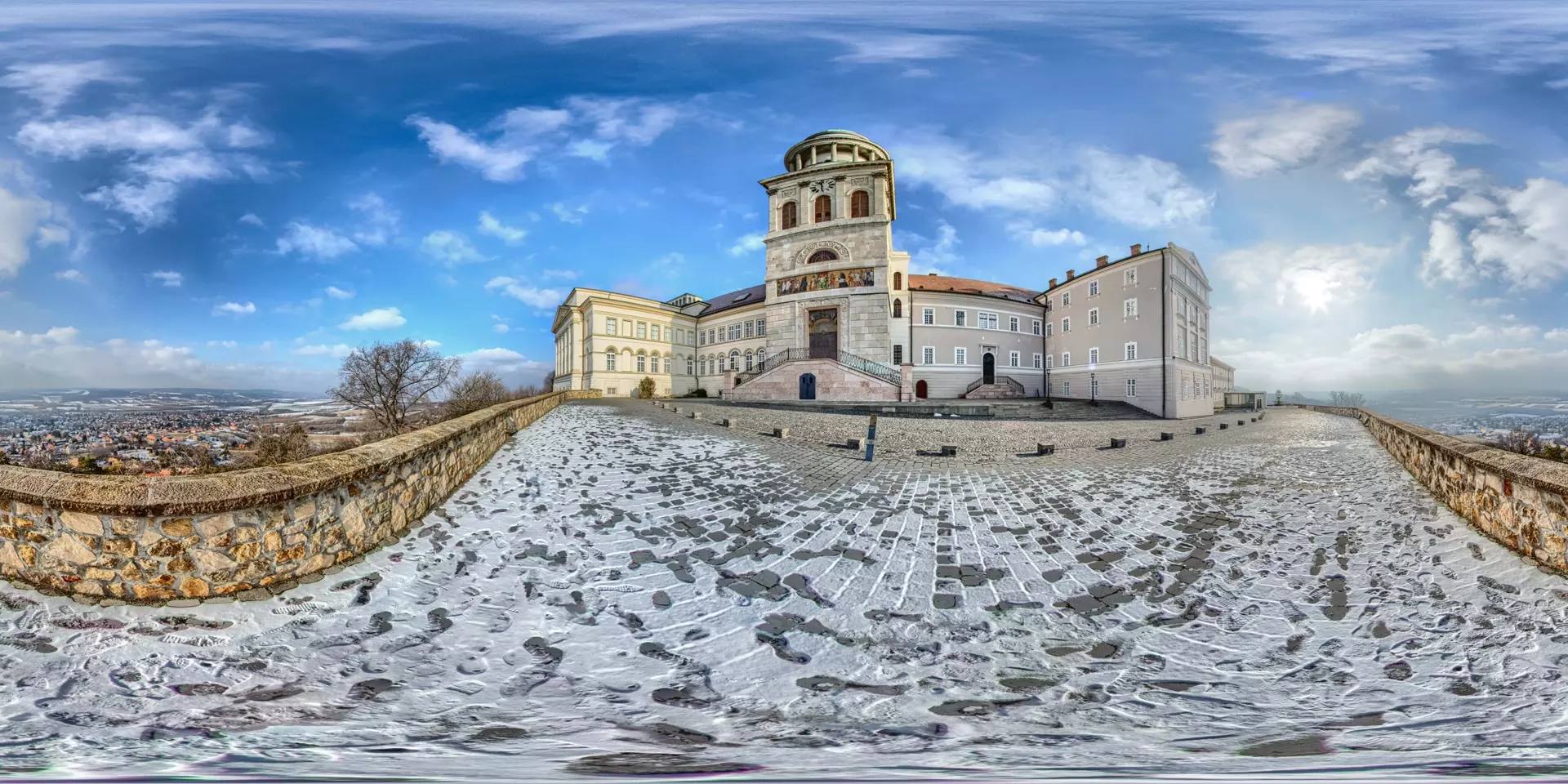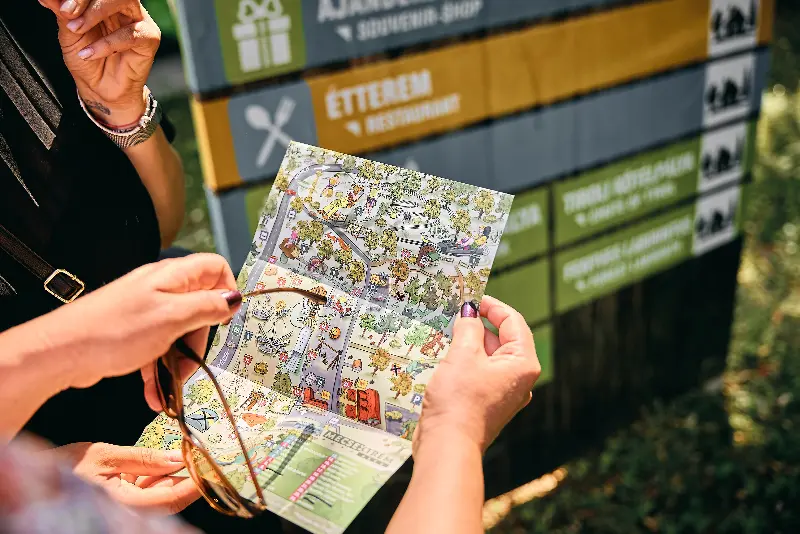
Helyszín címkék:
A millennial cultural environment: the “Pannonhalmi Apátság” (Territorial Abbey of Pannonhalma) and the Benedictines
Bóday Csilla
The history of the monastery

The monks arrived in Pannonhalma in 1021 and, following religious tradition, they built their monastery on the mountain, claiming that this was the closest to Almighty God. They survived the Mongol invasion intact, but could not cope with the Turkish siege of the 16th century. The revival started with the rebuilding of the monastery into a "castle" and was interrupted in 1786 when the monastery was rebuilt by Emperor Joseph II. Keen to relieve the state treasury with the income from the monastery's estates, he dissolved the Benedictines. The order was restored (both literally and figuratively) by King Francis I, who is said in 1802, that he wanted to see the education of the young in reliable hands, and gave the Benedictines the task of teaching. The schools then basically defined the image of the community. The Order also gave great scholars to society, including Ányos Jedlik and Gergely Czuczor. By the beginning of the 20th century, the image of the Benedictine monk as is best known in our country had become fixed: the monk-priest-teacher. Pannonhalma is of course traditionally the oldest school in our country: St Stephen also brought his son, Prince Imre, here to be educated.
The spirit of the Benedictines and monastic life

The same monastic order that founded the monastery in 996 under the rule of Grand Prince Géza, following the spirit of the Rule of Benedict of Nursia, still lives and works within its walls today. Monks are willing to give up marriage, property, and self-will for the sake of eternal life to come. Their communal lives are led by the abbot, and follow the example of Jesus and his disciples. "Ora et labora et lege - pray, work and read" - this is the essence of St Benedict's monastic rule. Today, this ideal still guides everyday life: monks work as pastors, teacher and they run care homes. The Hungarian Benedictines under the protection of St. Martin of Tours were given the task by St. Stephen's letter of privilege to pray unceasingly for the health and prosperity of the homeland. The tradition is still alive today. The monks come together three times a day for common worship and they never miss this prayer. By 1950, the Benedictine order had built up a model farm on nearly 60,000 hectares, the income from which was used to run its schools and parishes. Communism axed centuries of organic economic and institutional development.
From the mid-1980s, there was a noticeable increase in the number of tourists, but the order did not benefit from this, as even the tourist office was owned and run by a state company. Until the early ’90s, three institutions remained in Pannonhalma: the monastic community, the high school and the care home. The Hungarian Benedictines were suddenly and unexpectedly hit by the dissolution of the Soviet Union and the collapse of the socialist systems. In 1991 the community elected Astrik Várszegi as Archabbot, and he saw concrete examples of where the development of monasteries in the West was heading and understood that the change had come and that they had to join in with it. A date that usually occurs every thousand years in the life of a community was approaching: the Millennium of 1996. The Benedictines already had ambitious plans. They determined to organise no less than the meeting of Patriarch Alekszij II and Pope John-Paul II Which, of course, should have had a proper roof, because even that was missing. In the end, "only" the Pope visited the modernised Pannonhalma, which was largely modernised with state funds, for the millennium. Later the same year, in December 1996, the “Pannonhalmi Főapátság” (Territorial Abbey of Pannonhalma) and its natural environment were awarded UNESCO World Heritage designation.

The Abbey today
Past, present and future coexist harmoniously in the World Heritage Site. This is a message that the community here is ready to move with the times. The Romanesque Basilica, the Gothic cloister, the Baroque buildings of the monastery, the Neoclassical library and the tower were all built to the highest architectural and technical standards of the period. From this point of view, the recent new buildings of outstanding aesthetic quality do not historicise but embody the clean world of contemporary architecture, the puritanical formal language of the monastic tradition. There is a continuous “Abbey Tour” of the site, where visitors are professionally guided through the monastery's significant sites. You can walk through the magnificent library and see the water, wine, beer and perfumes made in the Benedictine manufactories. From the top of the hill, you can walk down to see the herbs growing in the abbey garden, which you can buy dried and processed, in the form of tea and spices.







